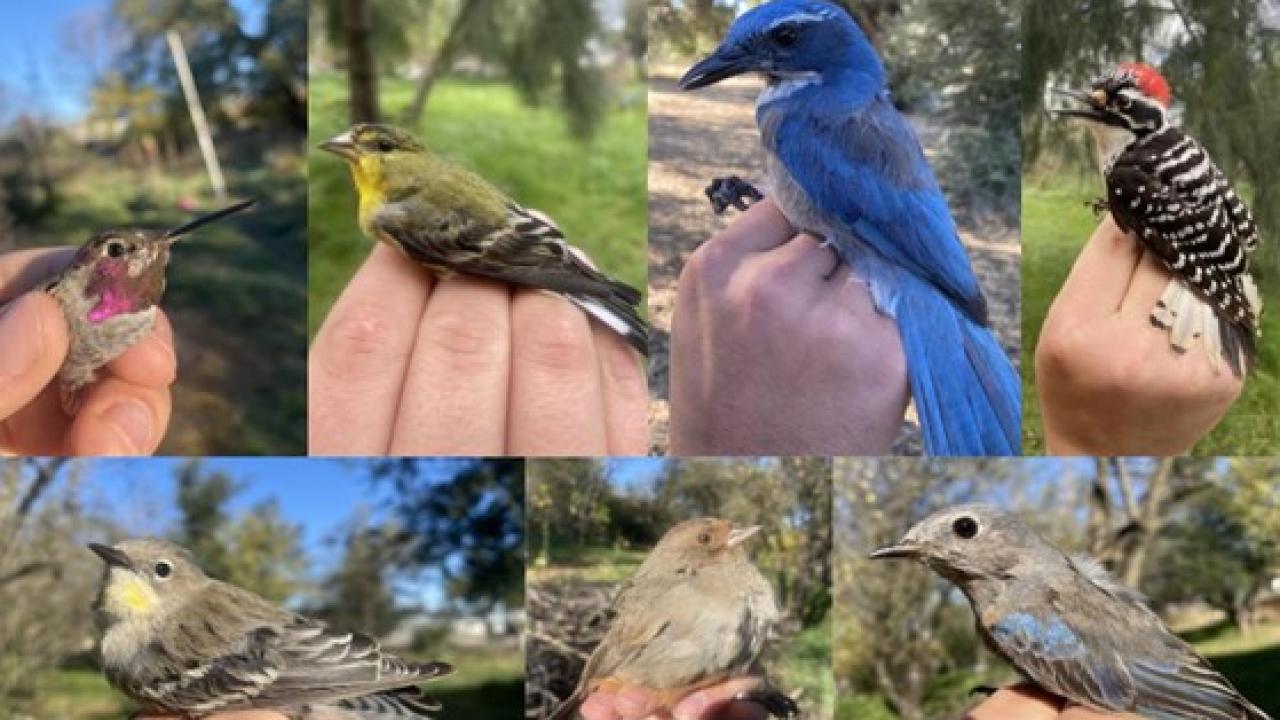
Report on Bird Diversity and Food Safety at the Student Farm
Working in the Karp Lab with Danny Karp & Austin Spence, recent UC Davis undergraduate Frank Fabbro produced a fascinating report on "Bird Diversity and Food Safety at the Student Farm". The report captures the wonderful diversity of wildlife that is possible on and around sustainable farms. Read on to learn more, or download a pdf of the report from the link below.
Summary of Our Work
At the beginning of 2022, Austin Spence, a postdoctoral researcher working with Daniel Karp in the Department of Wildlife, Fish, and Conservation Biology, began working on the Student Farm and adjacent garden with a team of undergraduate students to capture wild birds with mist nets – a specialized net. We collected fecal samples from birds to test for E. coli, Salmonella, and Campylobacter to understand the risk they pose to food safety in integrated agricultural systems. Beyond this project, I am interested in the bird diversity co-managed agricultural systems support. These are some of the results I gathered over the course of two years demonstrating some of the bird life that is being supported by this well-managed agricultural system.
Highlights

Birds by the Numbers
123 Species of birds have been recorded on the Student Farm and adjacent garden (Table 1)
26 Species of birds were captured on the Student Farm and adjacent garden during our studies
Most frequently captured species on the farm: Yellow-rumped Warbler; White-crowned Sparrow; Golden-crowned Sparrow
Species of Special Status Detected on the Farm
- Swainson’s Hawk– State listed as threatened
- Yellow-billed Magpie– IUCN listed as vulnerable
- Tricolored Blackbird– State listed as threatened and IUCN listed as endangered
Conclusion
Conclusion
The Student Farm served as an important field site for our work. Without its help and cooperation, we could not have collected this important data on the risks birds pose to food safety. Agriculture occupies a significant portion of the planet and finding ways wildlife can coexist with agriculture is of high value to conservation worldwide moving forward.
Beyond our research, the Student Farm is an important bird habitat. Hundreds of species use it throughout the year for different purposes. Resident Northern Mockingbirds feed in the olive trees and raise their young on the farm during the summer. Migratory Swainson’s Thrushes use the cottonwood trees and brushy areas as a critical spot to catch insects. This area will fuel their long annual journey between Central America and the coastal forests of the Pacific Northwest. American Pipits spend the winter picking for insects in the fields of the student farm before returning to the tree-less areas of Canada and Alaska to raise their young in the summer. Thank you for continuing to manage the farm in a way that supports bird diversity and habitat. Attached below is a full list of species detected from the student farm.
